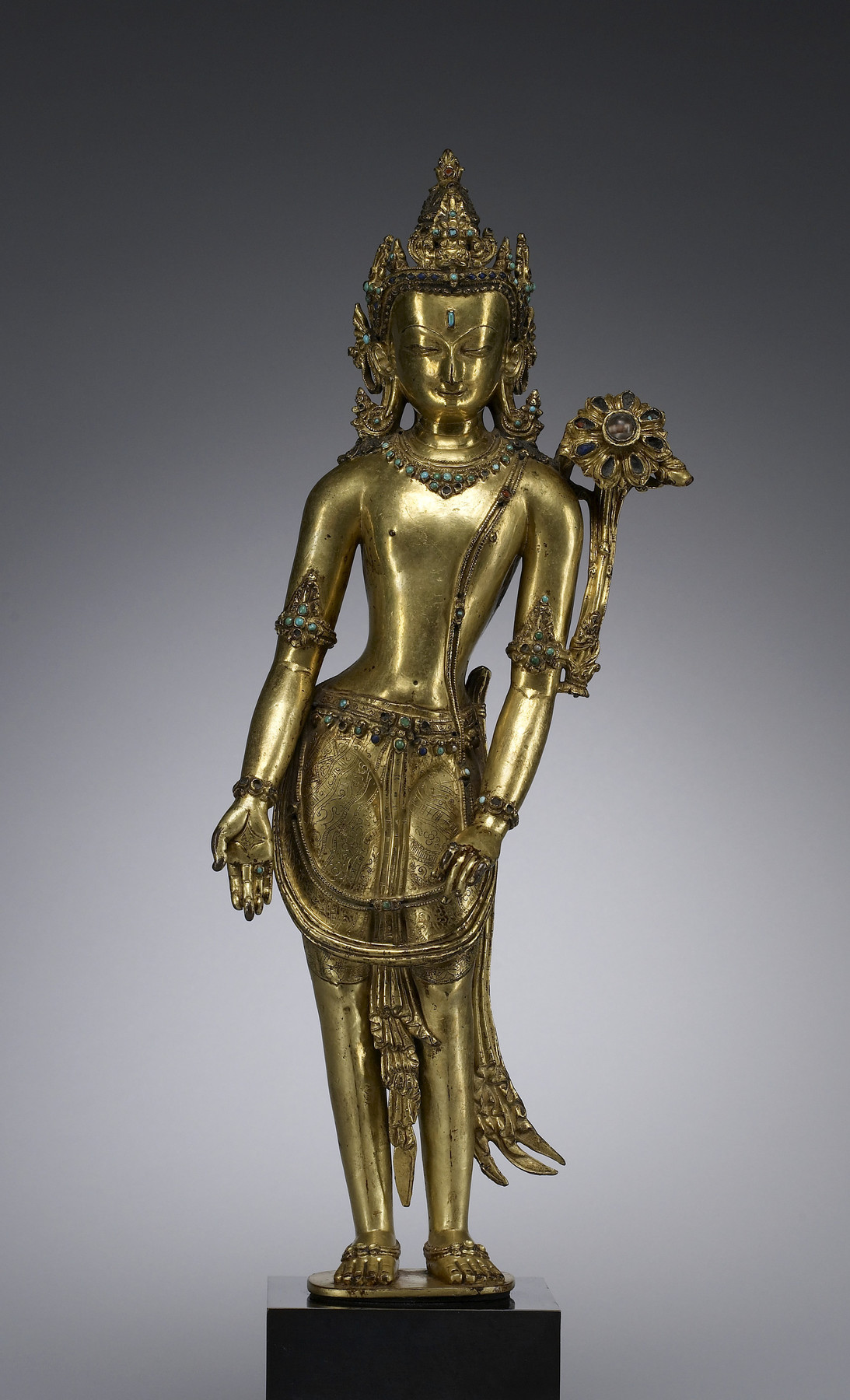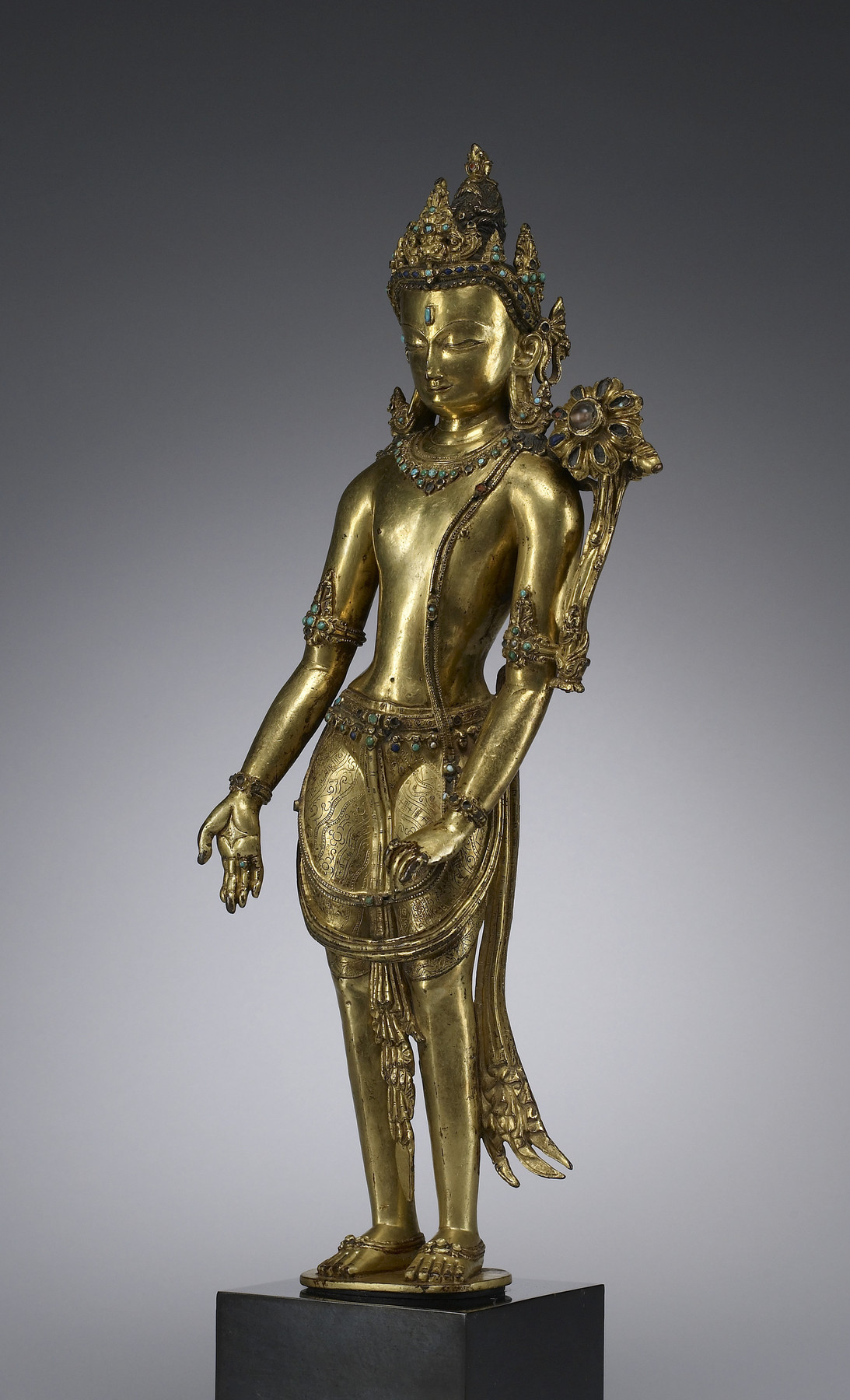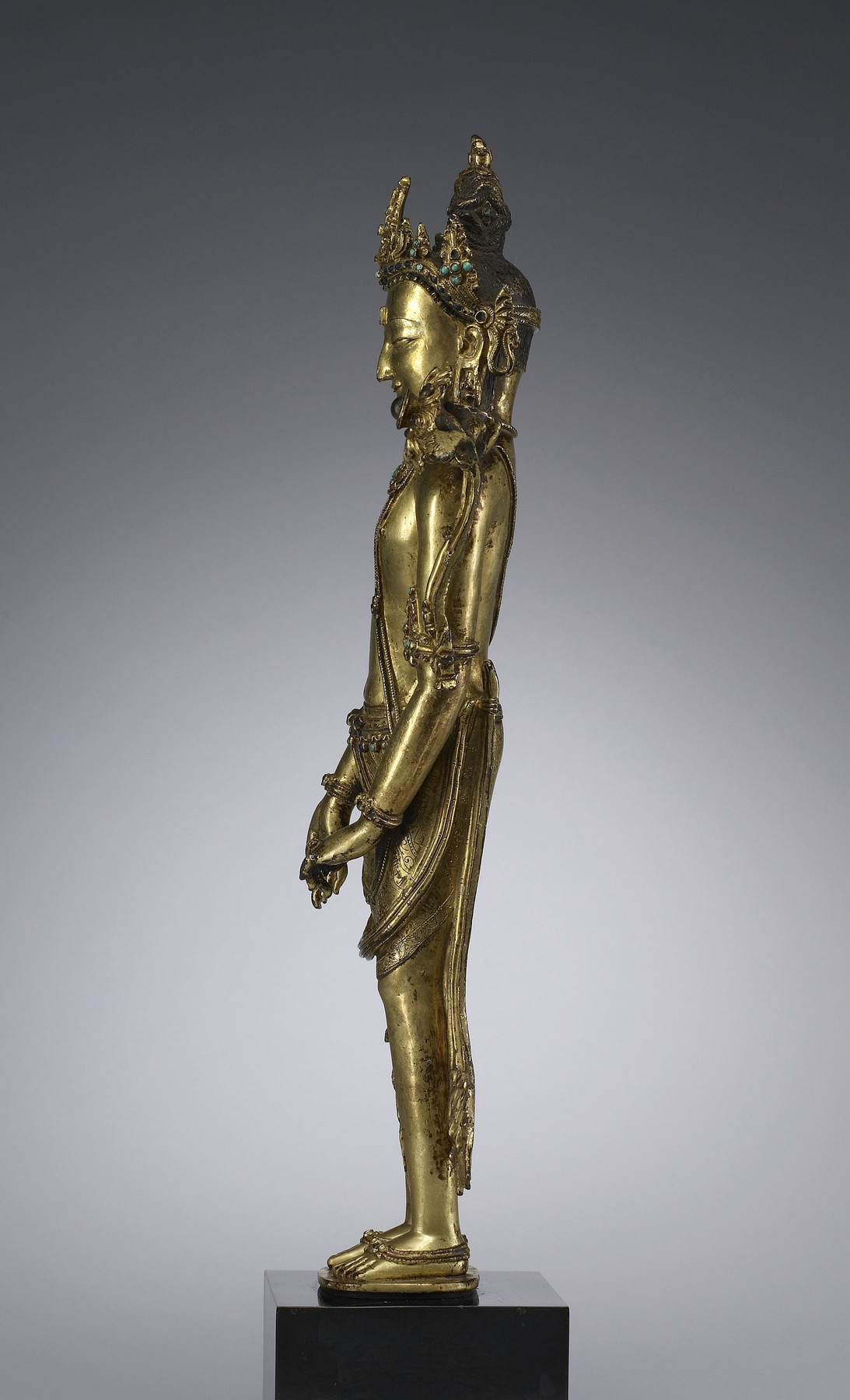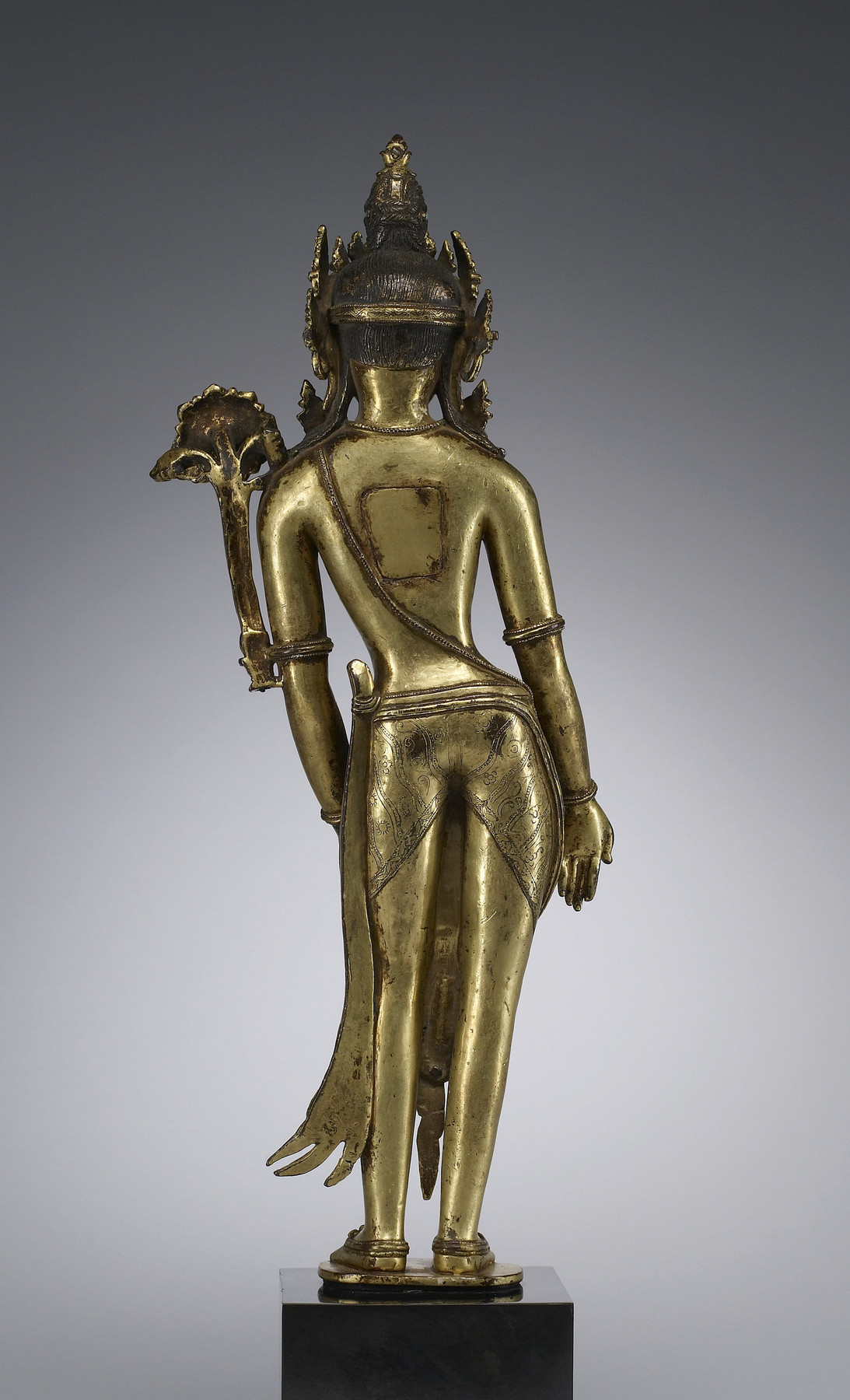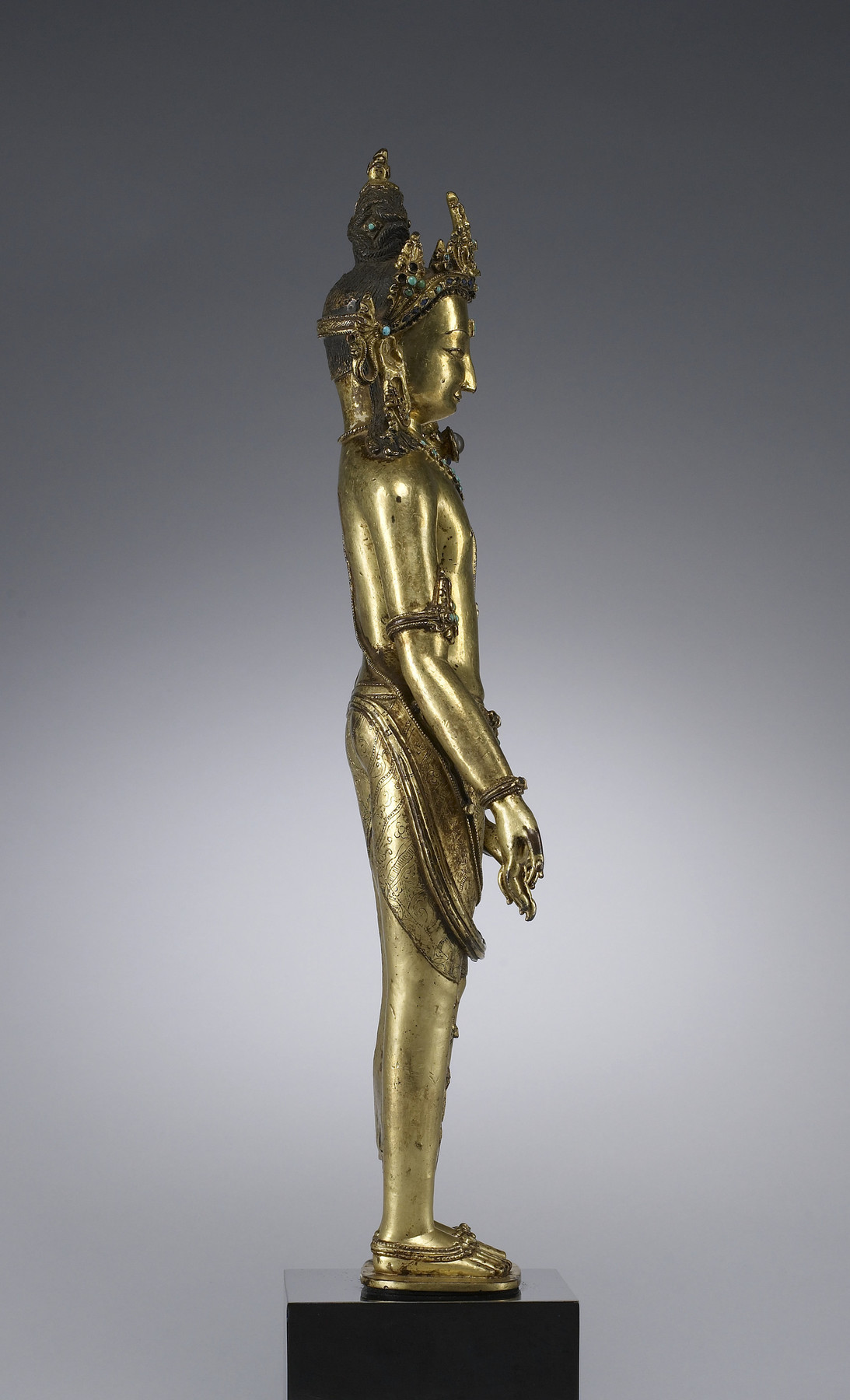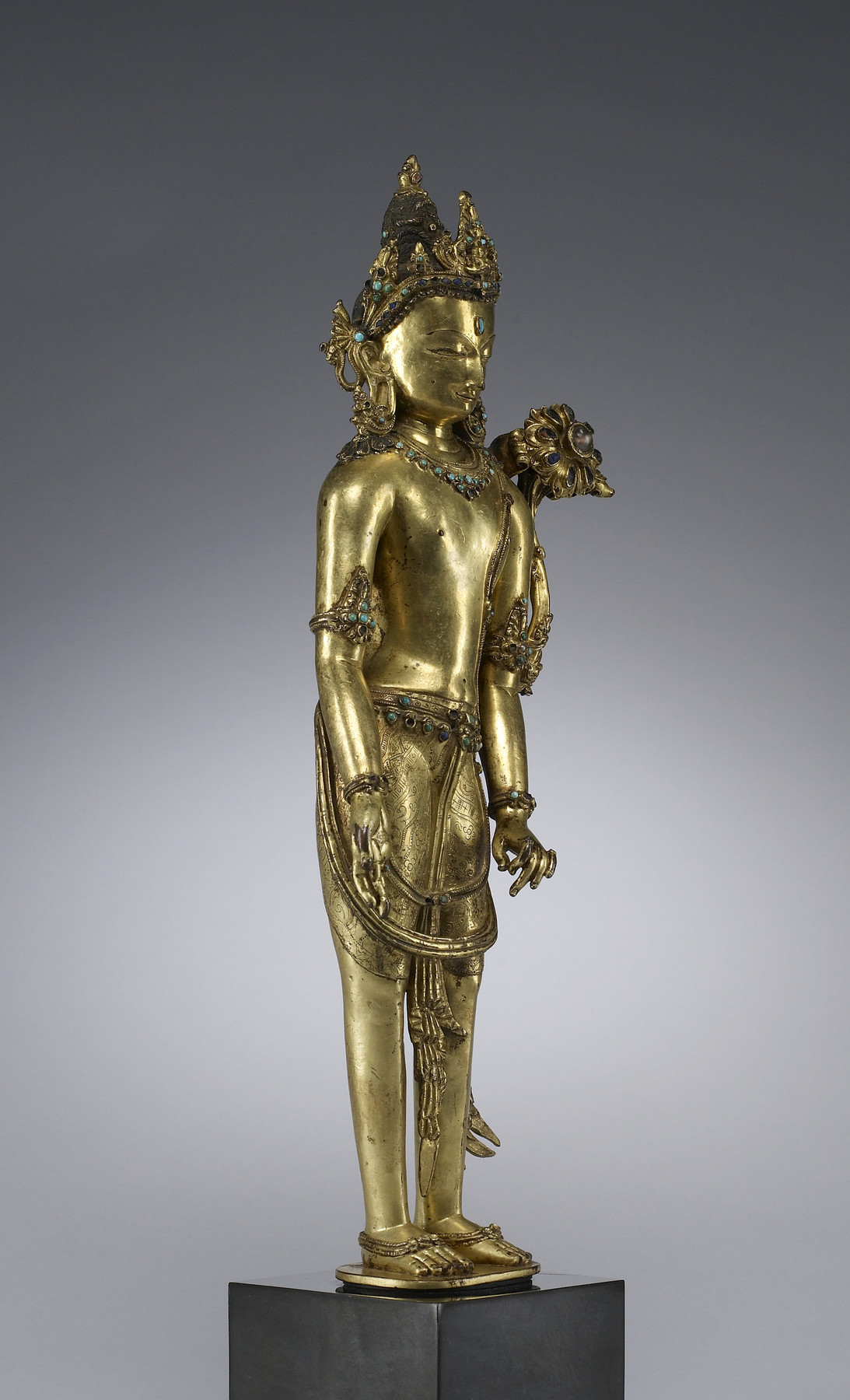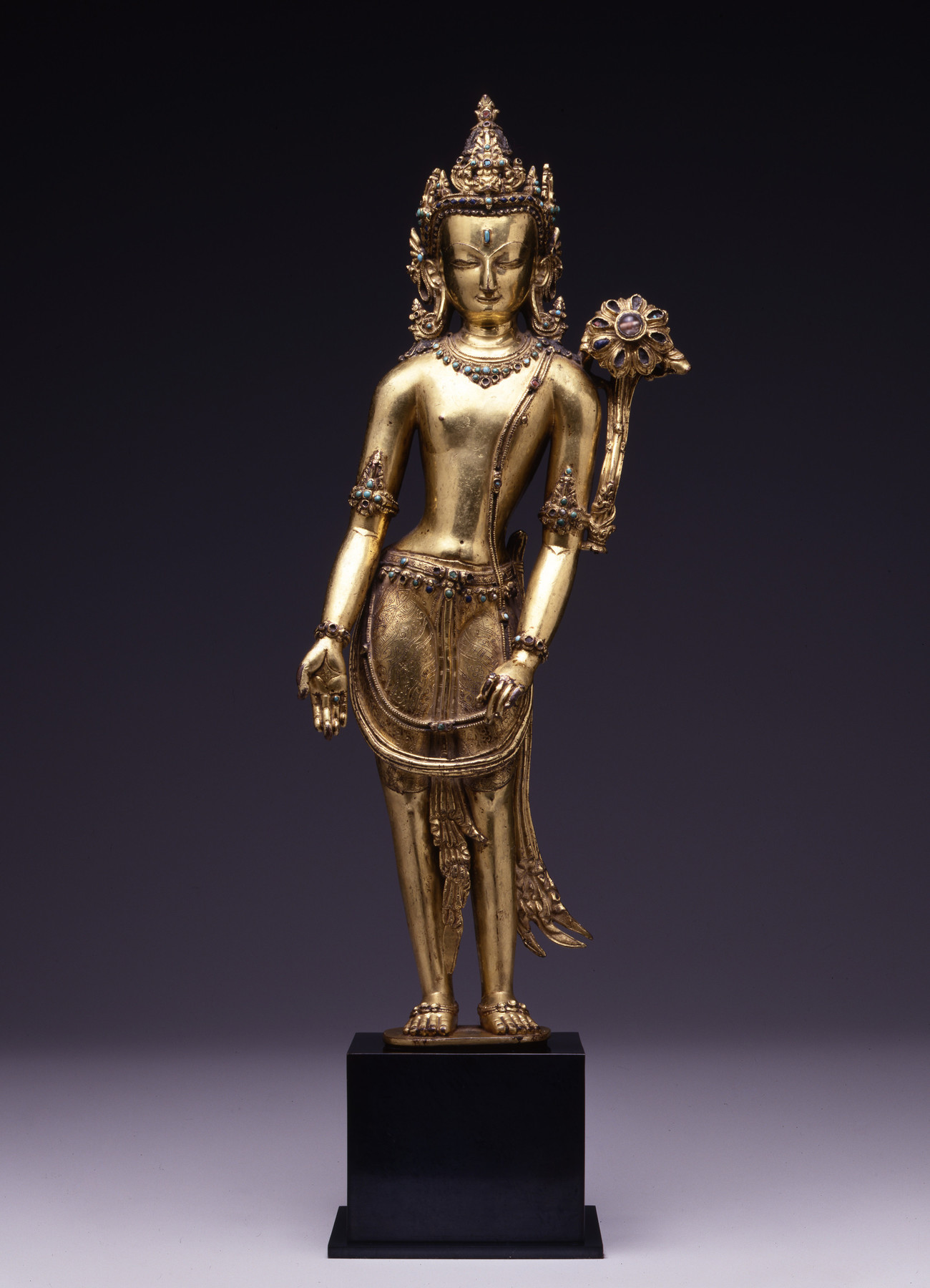Bodhisattva Avalokiteshvara
(India, Nepal, and Tibet)
A bodhisattva is one who has attained enlightenment, but he or she postpones "nirvana" (the cessation of existence and suffering) in order to help others on their own paths toward this goal. As the bodhisattva of compassion, Avalokiteshvara is especially popular. Often recognized by his lotus attribute, he is also called Padmapani, the one with the lotus ("padma") in his hand ("pani"). This sumptuous bronze sculpture, gilded and inlaid with semiprecious stones, may have been created in Tibet by migrant artists from Nepal, for it bears a stylistic resemblance to Newari works from the Kathmandu Valley.
After the artist made this sculpture, an abbot or a lama would have consecrated it through a series of ritual actions that allowed it to be a receptacle for Avalokiteshvara’s divine presence. An “eye-opening” ritual would animate the image and endow it with sense faculties. Offerings such as combs, textiles, gemstones, bone, and sacred scrolls of Buddhist teachings would have been inserted into the rectangular opening in Avalokiteshvara’s back.
Provenance
Provenance (from the French provenir, 'to come from/forth') is the chronology of the ownership, custody, or location of a historical object.
Ian Alsop, New York and Santa Fe; purchased by John and Berthe Ford, Baltimore, March 25 1997; given to Walters Art Museum, 2014.
Exhibitions
| 2001-2003 | Desire and Devotion: Art from India, Nepal, and Tibet in the John and Berthe Ford Collection. The Walters Art Museum, Baltimore; Santa Barbara Museum of Art, Santa Barbara; Albuquerque Museum, Albuquerque; Birmingham Museum of Art, Birmingham; Hong Kong Museum of Art, Hong Kong. |
Geographies
Tibet (Place of Origin)
Measurements
H: 15 1/4 × W: 6 1/2 × D: 3 1/8 in. (38.7 × 16.51 × 8 cm); Base H: 3 3/8 × W: 4 5/16 × D: 4 5/16 in. (8.5 × 11 × 11 cm)
Credit Line
Gift of John and Berthe Ford, 2014
Accession Number
In libraries, galleries, museums, and archives, an accession number is a unique identifier assigned to each object in the collection.
In libraries, galleries, museums, and archives, an accession number is a unique identifier assigned to each object in the collection.
54.3098

